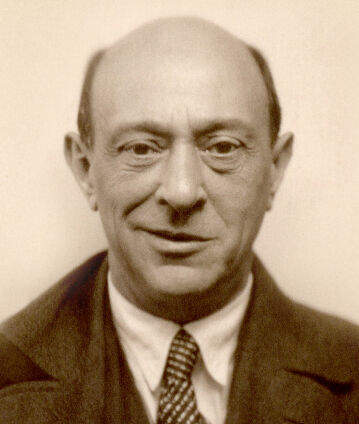Arnold Schoenberg
composer
Arnold Schoenberg, like no other composer at the beginning of the 20th century, made a radical change towards genuinely new music with the abandonment of tonality and the compositional method with “twelve tones related only to each other”. However, the “conservative revolutionary”, as one biographer called him, never wanted to abandon the past. He constantly emphasised the connections between the twelve-tone technique and music of previous eras.
Arnold Schoenberg, who played the violin and cello, was essentially self-taught. His musical career began while still an employee of the Viennese banking house Werner & Co. when he became a member of the amateur orchestra Polyhymnia in the mid-1890s. Its leader, Alexander Zemlinsky, became Schoenberg’s only teacher, with lessons consisting mainly of animated discussions about questions of music theory. Schoenberg, who soon made his living as a choirmaster and music teacher, married Mathilde Zemlinsky, his teacher’s sister, in 1901. In Berlin, he took over the position of conductor in Ernst von Wolzogen’s cabaret Überbrettl. During this time, he also met Richard Strauss, who gave Schoenberg the Liszt scholarship of the Allgemeiner Deutscher Musikverein and a lectureship at the Stern Conservatory. In 1903, Schoenberg returned to Vienna where he attracted a number of open-minded students, among them Anton Webern and Alban Berg. After concert scandals with atonal works, including his Chamber Symphony No. 1, Schoenberg went back to Berlin to teach at the Stern Conservatory. He had success during this time with his melodrama cycle Pierrot lunaire as well as with the world premiere of the Gurre-Lieder. After the First World War, Schoenberg founded the Society for Private Musical Performances, which featured his own works as well as composers he and his students considered important, such as Bartók, Busoni, Debussy, Mahler, Pfitzner, Ravel, Reger, Scriabin, Strauss and Stravinsky. In 1923, Schoenberg made public his controversial yet influential twelve-tone technique, according to which all the notes of the chromatic scale were to be treated equally in rows. In 1925, Schoenberg was appointed to the Prussian Academy of Arts in Berlin. After the National Socialists came to power, he converted to the Jewish faith and went into exile. Schoenberg taught in Boston and New York before being awarded a chair at the University of California in 1936, where he died in 1951.